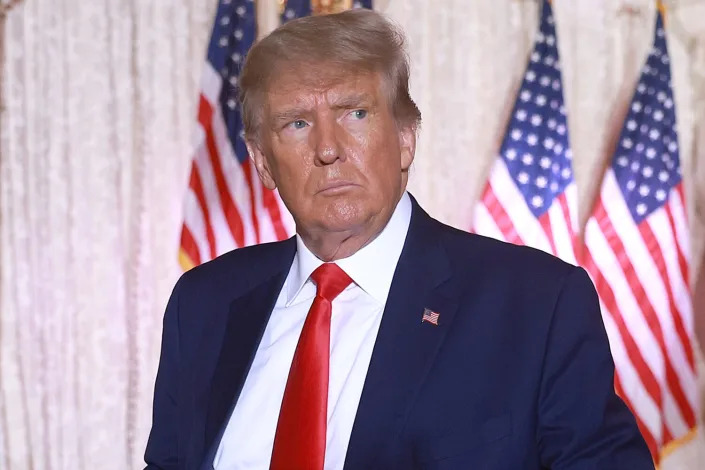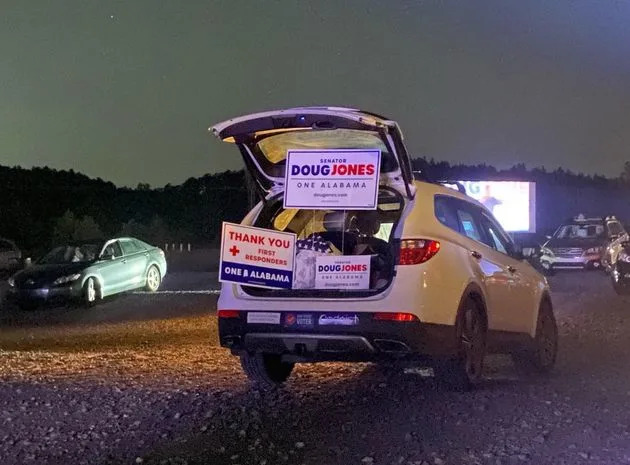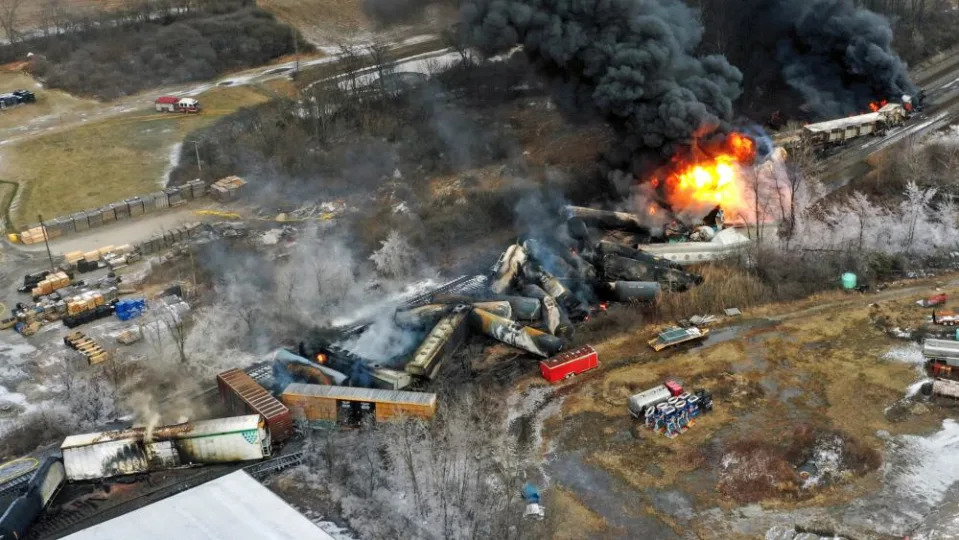USA Today
Donald Trump claims he will be arrested Tuesday in Manhattan probe, calls for protests
Ella Lee, Josh Meyer, David Jackson and Kevin Johnson – March 18, 2023

Former President Donald Trump said he expects to be arrested Tuesday in connection with a Manhattan district attorney investigation and called on his supporters to protest, even as uncertainty remained about whether any legal action was actually imminent.
Trump’s advisers Tuesday made clear they had no specific knowledge of the timing of any possible indictment, even as the former president made the comments on Truth Social, the social media network he founded.
Trump is under investigation for a $130,000 payment he made just before the 2016 election to silence adult film star Stormy Daniels about an earlier affair. The former president has denied wrongdoing, and federal investigators ended their own inquiry into the payments in 2019.
An indictment of Trump would send the U.S. political world into unprecedented territory – not just the first indictment of a former president, but one who is in the midst of again running for the White House. And his calls for protest also echoed similar statements by the former president ahead of Jan. 6.
Trump attorney Joe Tacopina confirmed that Trump’s reference to the timing of any possible charge is not based on any contact from Manhattan district attorney’s office.
“No one tells us anything, which is very frustrating,” Tacopina said in an email to USA Today. “President Trump is basing his response on press reports, and the fact that this is a political prosecution and the DA leaks things to the press instead of communicating to the lawyers as they should.”
Danielle Filson, a spokesperson for Manhattan’s District Attorney’s office, declined to comment on the former president’s statement.
Testimony from former Trump lawyer Michael Cohen, who arranged for the payment and already has been convicted and served prison time, could help bring the first charges in history against a former president.
On Truth Social Saturday, Trump urged his supporters to “Protest, take our nation back!”
“The far & away leading Republican candidate & former president of the United States of America, will be arrested on Tuesday of next week,” he wrote in all caps.
A Trump spokesperson speaking on background told USA TODAY that there has been “no notification” of a possible Trump indictment other than news media reports and “leaks from the Justice Dept. and the DA’s office.”
Manhattan prosecutors on Wednesday met with Daniels. She thanked her attorney in a tweet for “helping me in our continuing fight for truth and justice.”
Laurence Tribe, a professor emeritus at Harvard Law School, said Trump’s looming indictment in New York is uncharted waters.
“There really is no precedent for indicting a former president,” Tribe said. “It’s anyone’s guess exactly what would happen.”
Experts say Trump arrest unlikely
Trump says he’ll still run for president again if he’s indicted in any of the current investigations into his conduct. His first rally of the 2024 presidential race is scheduled for March 25 in Waco, Texas.
An indictment is not the same as an arrest; it’s a formal charge of a crime, while an arrest is when a person is taken into custody. An arrest of Trump is not likely, said former federal prosecutor Renato Mariotti.
“Typically defendants are not arrested in cases like this one when they’re represented by counsel,” he said.
Barbara McQuade, a former federal prosecutor and University of Michigan law professor, said a self-surrender is more likely in cases like Trump’s.
“Unless he is a risk of flight or danger to the community, self surrender seems typical in this kind of case,” she said. “He would be booked and have his fingerprints and mugshot taken, and then likely released on bond.”
Tribe said it’s likely that Manhattan district attorney Alvin Bragg will offer Trump a more anonymous way to turn himself in, though it’s unlikely the former president would accept such routes.
“I’m sure he wishes there were an escalator he could descend in order to self-surrender,” he said. “It’s his standard technique to turn everything into publicity, and they will undoubtedly raise a lot of money surrounding his self-surrender.”
Trump’s call for protests raise concerns
While Trump’s spokesperson acknowledged there has been “no notification” related to the timing of possible criminal charges, the former president’s call for protests drew the concern of law enforcement involved in preparing for such an event.
The appeal for demonstrations, said one official familiar with the arrangements, may immediately require a larger security footprint in New York and more agents assigned to shadow the movements of the former president.
The official, who is not authorized to comment publicly on the matter, also was not aware of a definitive time for any possible prosecution announcement.
Cohen, the former Trump lawyer who testified against him, said Trump’s call to action for his supporters echoes those ahead of the Jan. 6, 2021 Capitol attack.
“Donald’s post is eerily similar to his battle cry prior to the January 6th insurrection; including calling for protest,” Cohen told USA TODAY. “By doing so, Donald is hoping to rile his base, witness another violent clash on his behalf and profit from it by soliciting contributions.”
With Trump facing possible criminal charges, W. Ralph Basham, a former Secret Service director, said the prospect raises unprecedented questions for the Secret Service and the boundaries of the agency’s obligation to provide lifetime protection for the former president. Basham, who served during the George H.W. Bush administration, said he was unaware of any provision that would allow the agency to drop its protection obligation, even if a protectee was sentenced to a prison term. “We are in uncharted territory here,” Basham said. “I’m sure the attorneys are scrambling to find answers to those questions.”
“I’m not aware of anything… that would preclude them (Secret Service agents) from escorting a former president to a detention center in the event of a conviction and prison sentence,” Basham said, adding that the agency would then have to consider “establishing a presence” at a detention center for the duration of any sentence. “I just don’t know,” he said. “The lawyers are going to have to figure this out.”
Meet Michael Cohen: Who is the liar and felon who might help convict his former boss, Donald Trump?
Trump being treated ‘like an ordinary citizen’
While a future Trump indictment would be historic, perhaps even greater in significance is that the justice system is working as it should, Tribe said.
“He’s being treated the way he should be treated, like an ordinary citizen,” he said. “Having a mugshot being fingerprinted, having to stand in front of a judge and answer, ‘Do you plead guilty or not guilty?’
“The same thing happens to other ordinary citizens,” he continued.














